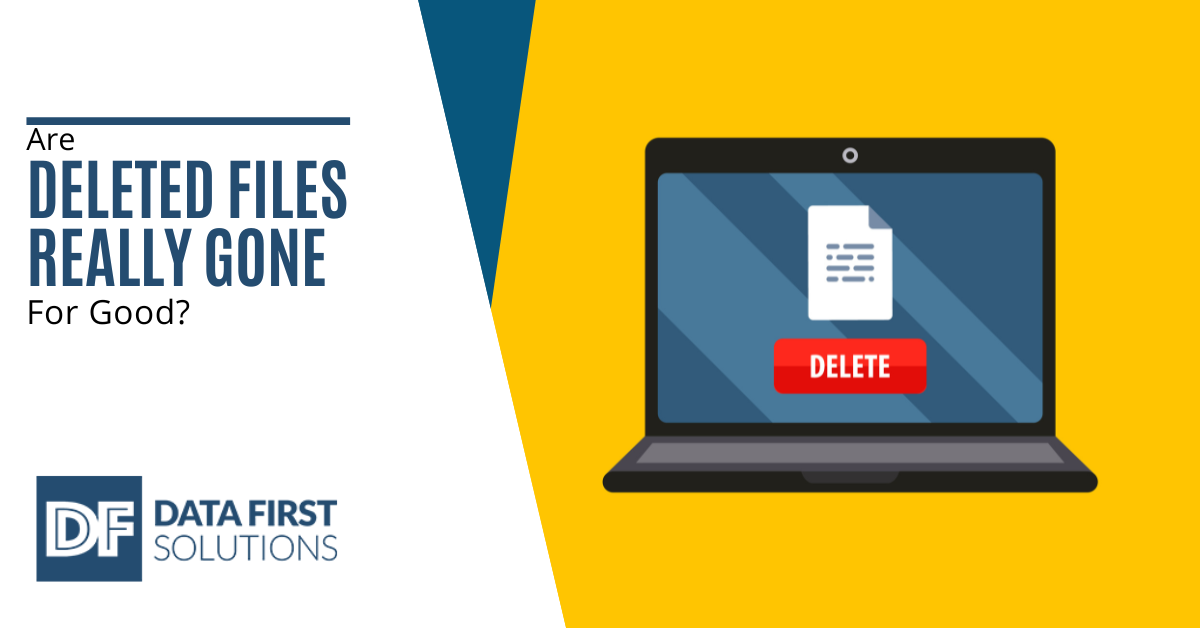
What Really Happens When You Delete a File?
A file doesn’t truly vanish from your computer or mobile device when you delete it. Rather, the operating system only indicates that the location where the file was stored is open for more data. Until fresh information replaces it, the original file data stays on the storage device. This implies that specialized software or methods can often be used to retrieve erased files.
Removing a book from a library catalog without actually taking it off the shelf is comparable to this procedure. Although it is no longer listed in the system, the book is still present. Similar to this, deleted files frequently remain on your device; they are merely hidden from view and designated as available space for future data. It is essential to comprehend this idea for data security and recovery reasons. We’ll go into more detail about data recovery techniques in the following section.
How Can Deleted Files Be Recovered?
The fact that deleted files aren’t immediately erased opens up possibilities for data recovery. There are several methods and tools available for retrieving deleted files, ranging from built-in operating system features to specialized software solutions.
File Recovery Software
One of the most common methods for recovering deleted files is through the use of file recovery software. These programs scan your storage device for remnants of deleted files and attempt to piece them back together. Many of these tools are user-friendly and can recover a wide variety of file types, from documents and photos to videos and emails.
Data Recovery Services
For more complex cases or when dealing with physically damaged storage devices, professional data recovery services can be employed. These services use advanced techniques and equipment to retrieve data from hard drives, SSDs, and other storage media that may be inaccessible through conventional means.
System Restore Points
Operating systems like Windows often create restore points that can be used to revert the system to a previous state. While not specifically designed for file recovery, these restore points can sometimes bring back deleted files if they were present at the time the restore point was created.
Understanding these recovery methods is important not only for those hoping to retrieve lost data but also for individuals and organizations concerned about data security. In the following section, we’ll explore the implications of data persistence and discuss methods for ensuring that sensitive information is truly gone when deleted.
Why Is Secure File Deletion Important?
Given the persistence of deleted data, secure file deletion becomes a critical concern for individuals and businesses alike. Standard deletion methods often leave data vulnerable to recovery, which can lead to privacy breaches, identity theft, or the exposure of sensitive corporate information.
Secure file deletion goes beyond simply marking space as available for new data. It involves overwriting the original data multiple times with random patterns, making it virtually impossible to recover the original information. This process is often referred to as “shredding” or “wiping” data.
For businesses handling sensitive customer information or proprietary data, implementing secure deletion practices is not just a matter of best practice—it’s often a legal requirement. Various data protection regulations, such as GDPR in Europe and CCPA in California, mandate the proper disposal of personal data.
Individuals should also be aware of the importance of secure deletion, especially when disposing of old devices or sharing files. Personal information, financial data, and private communications can all be at risk if not properly deleted. In our next section, we’ll discuss practical methods for ensuring your deleted files stay deleted.
How Can You Ensure Deleted Files Are Gone for Good?
To truly delete files beyond recovery, you need to take additional steps beyond the standard delete function. Here are several methods to ensure your deleted files are gone for good:
Use File Shredding Software
File shredding software overwrites the space occupied by a file with random data multiple times. This makes it extremely difficult, if not impossible, to recover the original data. Many reputable file shredding programs are available, both free and paid.
Encrypt Your Drive
Full-disk encryption can provide an additional layer of security. Even if someone manages to recover file fragments from an encrypted drive, the data will be unreadable without the encryption key.
Perform a Factory Reset
When disposing of a device, perform a factory reset. This process typically includes overwriting all user data. However, for maximum security, you may want to use additional data wiping tools before the reset.
Physical Destruction
For the highest level of security, physical destruction of the storage device is the most foolproof method. This can involve degaussing (for magnetic media), shredding, or complete destruction of the device. By implementing these methods, you can significantly reduce the risk of your deleted files being recovered. However, it’s important to remember that no method is 100% foolproof, especially against highly sophisticated recovery techniques.
Ready to Secure Your Data?
Knowing the actual nature of file deletion is essential in the digital era to safeguard sensitive data and our privacy. Standard deletion techniques frequently leave our data susceptible to recovery, even though they might appear adequate for daily use.
At Data First Solutions, our team of experts can guide you through the process of implementing secure deletion practices, data encryption, and comprehensive data management strategies. Don’t leave your sensitive information at risk – contact us today to ensure your deleted files stay deleted and your data remains secure.






